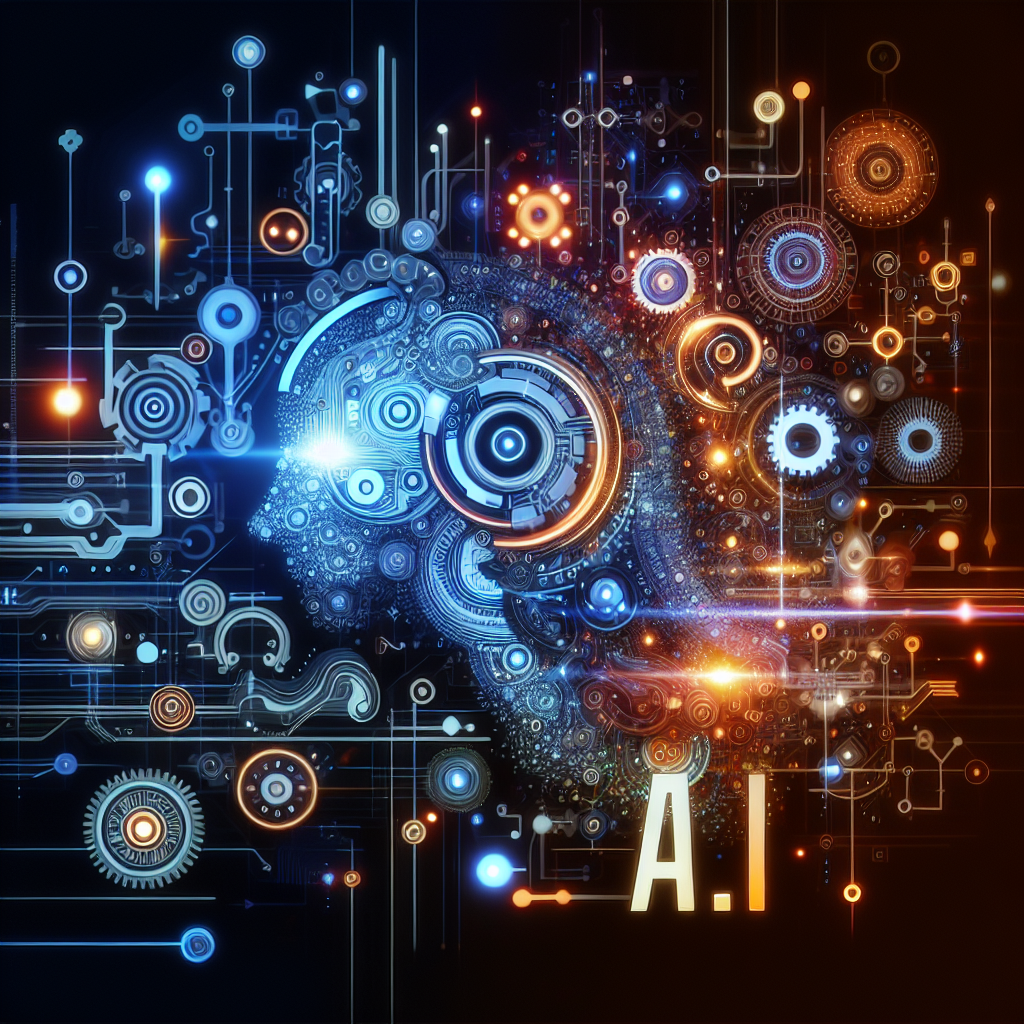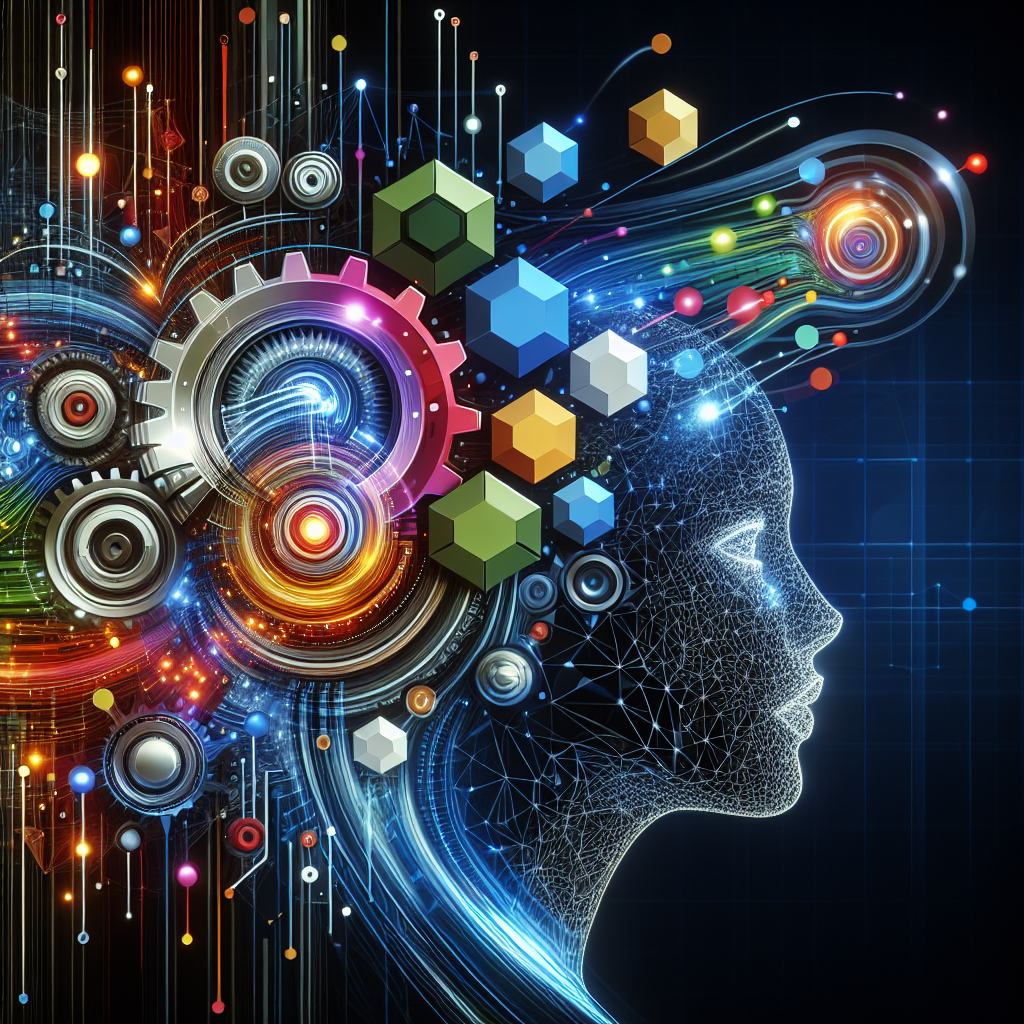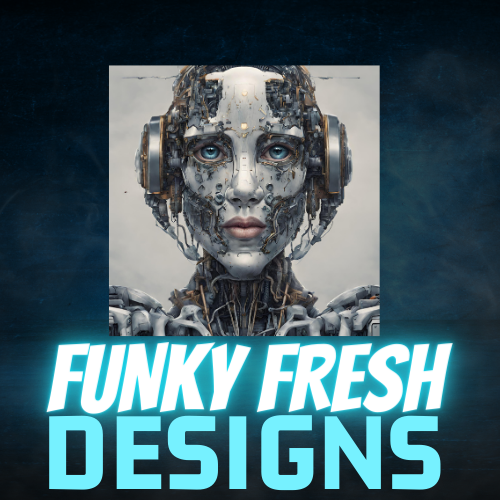AI Designs: Reflecting Brands. In a world where consumer attention is fleeting and competition is fierce, the importance of brand recognition and differentiation cannot be understated. With the rapid advancements in artificial intelligence technology, a new era of design has emerged – one that goes beyond human capabilities and delves into the realm of AI-generated creations. From logos and packaging to websites and advertisements, AI designs have proven their ability to captivate audiences and reflect the essence of brands in a way that no human designer ever could. In this article, you will discover the fascinating world of AI designs and how they are revolutionizing the way brands communicate their identity to the world.
1. Understanding AI Designs
1.1 What is AI?
Artificial Intelligence (AI) refers to the simulation of human intelligence in machines that are programmed to think and learn like humans. It involves the creation of intelligent computer systems that can perceive, understand, learn, and solve problems. AI algorithms can analyze vast amounts of data to provide valuable insights and make informed decisions.
1.2 The Role of AI in Design
AI is revolutionizing the field of design by enabling creative professionals to streamline their processes, enhance their productivity, and explore new possibilities. It has the potential to transform various design domains, including graphic design, web design, product design, and branding. With AI, designers can automate repetitive tasks, generate new design ideas, and gain insights into customer preferences.
1.3 Benefits of AI in Design
The integration of AI in design brings several benefits. Firstly, it saves designers time and effort by automating repetitive tasks like image editing, color selection, and typography generation. This allows designers to spend more time on creative thinking and problem-solving. Secondly, AI can generate design ideas and concepts that may not have been considered by humans alone, leading to innovative and unique design outcomes. Additionally, AI can analyze vast amounts of consumer data to gain insights into customer preferences, ensuring the design aligns with the target audience’s needs and desires.
2. Brand Identity and AI Designs
2.1 Defining Brand Identity
Brand identity encompasses the visual, verbal, and emotional elements that define a brand and distinguish it from competitors. It includes a brand’s logo, colors, typography, tone of voice, and overall brand experience. A strong brand identity helps create a unique and memorable perception in the minds of consumers, fostering loyalty and positive associations.
2.2 Importance of Brand Identity in Design
Brand identity plays a crucial role in design as it reflects the essence of a brand and communicates its values, personality, and promise to the target audience. Consistency in brand identity builds trust and recognition, making it easier for consumers to connect with and remember a brand. It establishes a distinct identity in a crowded marketplace and contributes to long-term brand success.
2.3 AI’s Role in Reflecting Brand Identity
AI can assist designers in creating designs that effectively reflect and reinforce a brand’s identity. With AI-driven tools, designers can generate logos, select color palettes, choose typography, and edit images that align with the brand’s personality and values. By analyzing existing data on consumer preferences and trends, AI can offer valuable recommendations to ensure the design elements accurately represent the brand’s identity and resonate with the target audience.

3. AI Tools for Brand Design
3.1 AI-Driven Logo Design
Logo design is a critical aspect of a brand’s visual identity. AI-driven logo design tools employ machine learning algorithms to analyze existing logos, industry trends, and brand attributes to generate unique and relevant logo concepts. These tools can provide designers with a wide range of logo options, saving time and effort while ensuring the design aligns with the brand’s identity.
3.2 AI-Powered Color Palette Selection
Choosing the right colors is essential in visual design, as it evokes emotions and conveys messages. AI-powered color palette selection tools leverage algorithms to analyze the brand’s personality, target audience, and industry trends to generate appropriate color schemes. This helps designers create visually appealing and harmonious designs that align with the brand’s identity and trigger the desired emotional responses.
3.3 AI-Generated Typography
Typography is a crucial element in design, as it communicates the brand’s voice and personality. AI-generated typography tools analyze the brand’s attributes, industry trends, and target audience preferences to suggest font styles, sizes, and combinations that align with the brand’s identity. These tools offer designers a wide range of typographic options, expanding their creative possibilities while ensuring consistency with the brand.
3.4 AI-Enhanced Image Editing
Image editing is a common task in design, and AI enhances this process by automating and simplifying complex edits. AI-powered image editing tools utilize deep learning algorithms to identify objects, remove backgrounds, enhance colors, and apply creative effects. These tools enable designers to achieve professional-level image editing quickly and efficiently, enhancing the overall visual appeal of the brand’s design materials.
3.5 AI-Based Brand Sentiment Analysis
Understanding consumer sentiment is crucial for effective brand communication. AI-based sentiment analysis tools analyze consumer feedback, social media posts, and other data sources to gauge the overall sentiment towards a brand. By analyzing this data, designers can gain insights into how the brand is perceived and adjust their design strategies accordingly to maintain alignment with the brand’s identity and optimize consumer engagement.
4. Customization and Personalization
4.1 Tailoring Designs for Individual Customers
Personalization is becoming increasingly important in design, as consumers seek products and experiences that resonate with their individual tastes and preferences. AI enables designers to tailor designs to specific customer segments or even individual customers by analyzing their data and creating personalized recommendations. This level of customization enhances the overall brand experience, fostering deeper connections and increasing customer satisfaction.
4.2 AI’s Impact on Personalization
AI plays a significant role in enabling personalization by analyzing vast amounts of customer data to identify patterns, preferences, and behaviors. By understanding these individual characteristics, AI can generate design recommendations that cater to each customer’s unique preferences and needs. This level of personalization enhances customer satisfaction, drives engagement, and strengthens brand loyalty.
4.3 Balancing Personalization with Brand Consistency
While personalization is essential, maintaining brand consistency remains a crucial aspect of design. AI enables designers to strike a balance between personalization and brand consistency by using algorithms that analyze customer preferences and brand guidelines simultaneously. By adapting design elements based on individual preferences within the framework of the brand’s identity, AI ensures that personalization does not compromise the overall brand experience and recognition.

5. Ensuring Brand Consistency in AI Designs
5.1 Defining Brand Consistency
Brand consistency refers to the cohesive and unified representation of a brand across various touchpoints and design materials. It ensures that the brand’s visual, verbal, and experiential elements align with its identity and resonate with the target audience consistently. Brand consistency builds trust, recognition, and familiarity, contributing to a strong and memorable brand presence.
5.2 Challenges in Maintaining Brand Consistency with AI
While AI offers numerous benefits, maintaining brand consistency can be challenging in AI-driven design processes. AI algorithms may generate designs that deviate from the brand’s identity or fail to capture its essence accurately. Designers must ensure that AI tools are trained with comprehensive brand guidelines and that the generated designs undergo human review and modifications to align appropriately with the brand’s identity.
5.3 Techniques to Achieve Brand Consistency
To achieve brand consistency in AI-driven designs, designers can implement several techniques. Firstly, comprehensive brand guidelines should be established, clearly defining visual, verbal, and experiential aspects of the brand. These guidelines must be shared with AI algorithms to ensure the generated designs align with the brand’s identity. Secondly, human review and modification of AI-generated designs are crucial to ensure they fully capture the brand’s essence and align with its guidelines. Finally, continuous monitoring and feedback loops can help designers refine and improve AI algorithms to enhance brand consistency in the long run.
6. Human-Computer Collaboration in AI Designs
6.1 The Role of Human Input in AI Design
Despite the advancements in AI, human input remains vital in the design process. While AI can automate repetitive tasks and generate design recommendations, human designers bring creativity, intuition, and critical thinking to the table. Human input ensures that AI-generated designs align with the brand’s vision, meet specific design objectives, and evoke emotional responses in the intended audience.
6.2 Advantages of Human-Computer Collaboration
Human-computer collaboration in AI designs offers numerous advantages. By leveraging AI tools, designers can streamline menial tasks, allowing them to focus more on refining ideas and exploring creative solutions. AI can provide designers with data-driven insights and recommendations, enhancing the decision-making process. Additionally, human designers can bring their expertise, artistic sensibilities, and subjective judgment to complement the objective analysis of AI algorithms.
6.3 Ethical Considerations in AI Design Collaboration
As human-computer collaboration becomes more prevalent in AI design, ethical considerations arise. Designers must ensure that AI algorithms are developed and trained ethically, avoiding biases, discrimination, or infringement of intellectual property rights. Transparent communication and clear delineation of responsibilities between humans and AI algorithms are essential to maintain ethical standards in design collaboration. Additionally, designers must consider the potential impact of AI on employment and job roles, ensuring that fair opportunities and training are provided for everyone involved in the design process.
7. The Future of AI Designs
7.1 Evolving AI Capabilities in Design
The future of AI designs holds tremendous potential for further advancements and innovations. As AI algorithms continue to learn and improve, their ability to understand human preferences, emotions, and intents will become more refined. This will lead to more accurate and personalized design recommendations, higher levels of automation, and enhanced creativity support for designers.
7.2 Potential Impact on Design Professionals
The integration of AI in design will reshape the roles and responsibilities of design professionals. While certain repetitive tasks may be automated, designers will have the opportunity to focus on higher-level creative thinking, strategy development, and user experience design. As AI becomes a more integral part of the design process, designers will need to acquire new skills to effectively collaborate with AI algorithms, interpret and utilize data-driven insights, and maintain brand consistency in an increasingly AI-driven design landscape.
7.3 Ethical and Creative Challenges Ahead
The future of AI designs also brings forth ethical and creative challenges. Designers must ensure that AI algorithms are developed and trained responsibly, respecting user privacy, avoiding biases, and considering the long-term societal impact of AI-integrated designs. Additionally, maintaining the balance between personalized experiences and maintaining brand consistency will require designers to navigate potential conflicts and make ethical design decisions that align with a brand’s values, customer expectations, and societal norms.
Conclusion AI Designs: Reflecting Brands
In conclusion, AI is transforming the field of design, offering new opportunities to streamline processes, enhance productivity, and unleash creativity. By leveraging AI-driven tools and techniques, designers can reflect a brand’s identity more effectively, personalize design experiences, and deliver consistent brand messaging. As AI continues to evolve, it will redefine the role of design professionals and bring forth ethical considerations and creative challenges that require careful navigation. The future of AI designs holds immense potential for designing innovative, personalized, and impactful brand experiences, while keeping human creativity and ethical values at the forefront.
